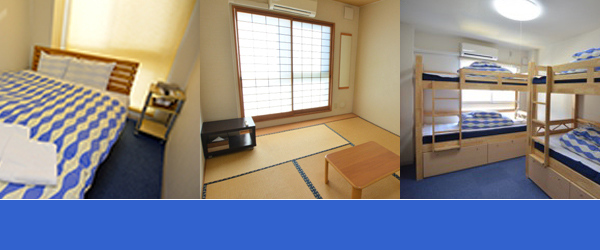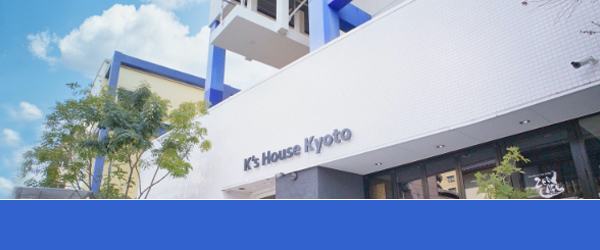When you think of Kyoto, you think of visiting temples and shrines, but aren’t you tired of seeing all the similar buildings?
We will introduce 10 of shrines and temples in Kyoto where you can enjoy the Japanese atmosphere and the fantastic scenery that will take you in!
Please note that some places have limited viewing periods.
1. Rurikou-in


The seasonal scenery of fresh greenery and autumn leaves reflected on the desk and floor creates a spectacular view that will overwhelm the viewer.
The trees and moss that cover everything you can see are breathtaking no matter where you look.
Viewing is only possible during special viewing events in spring, summer, and fall, and reservations are required for some of them.
Visiting hours: Only special visiting period in Spring / Summer / Autumn
Official website: https://rurikoin.komyoji.com/
2. Genkou-an Temple

The round window is named “Window of Enlightenment” and the square window is named “Window of Perplexity”.
The circular shape of the Window of Enlightenment represents the spirit of “Zen and Entsu(円通)”, and the circle represents the macrocosm.
In addition, the square shape of the window of confusion symbolizes the “human life” and represents the hardships of birth, old age, illness, and death.


Visiting hours: Viewing may be temporarily suspended due to a memorial service.
Official website: https://genkouan.or.jp/
3. Unryu-in

Just like Genkoan, there is a “window of enlightenment” here as well, and the scenery changes every time you visit.
In addition, there are four square shoji windows in the lotus room, allowing you to enjoy the atmospheric scenery of camellias, lanterns, autumn leaves, and pine trees
Visiting hours: Closed on some days due to memorial services. There are special night viewings in spring and fall.
Official website: https://www.unryuin.jp/
4. Shouju-in


This window, which is famous for its heart-shaped window, is called “Inome-mado”.
When a heart is turned upside down, it becomes the shape of a boar’s eye, and it has been used in traditional Japanese architecture since ancient times as a talisman to ward off evil spirits and bring good fortune. It is definitely used.
Visiting hours: Closed on New Year’s holidays and other events.
Official website: http://shoujuin.boo.jp/
5. Tenju-an


One of the sub-temples of Nanzenji Temple, it is a beautiful dry landscape garden with white sand and moss that was rebuilt in 1602 after being destroyed by fire during the Onin War.
Especially when visiting at night in autumn, the autumn leaves illuminated by lights create a magical atmosphere.
Visiting hours: Open all year round. Opening hours depends on seasons.
Official website: https://www.nanzenji.or.jp/
6. Komyo-in


Komyoin is one of the sub-temples of Tofukuji Temple.
Gardener Mirei Shigemori embodies her belief in a ”living garden”, which incorporates the flow of time, wind and rain, and all the workings of nature, adding flowers to the beauty of the garden, and as the seasons change. It’s a place you’ll want to visit again and again.
Visiting hours: Open all year round
Official website: https://komyoin.jp/
7. Tentoku-in

This is also one of the sub-temples of Tofuku-ji Temple, and is a temple with a distinctive bell-shaped window.
Also known as “Temple of Bellflowers”, the contrast between the blue flowers, moss, and trees is a sight to behold.
Although it is not normally open to the public, it can only be viewed during special viewing periods in June and July, when the bellflowers bloom, and in autumn.
Visiting hours: Usually not open to public. Open only during special viewing periods in early summer and autumn.
Official website: https://tentokuin.jp/
8. Enkouji temple

At Jugyu Garden, you can enjoy a variety of scenery depending on the season, so much so that you can feel the life of the trees.
The Karesansui garden, bamboo forest, and sunset view from the mountain behind are also popular.
Reservations are required for special viewings to avoid crowds.
拝観期間:特別拝観期間は日時指定の予約制 それ以外は通年で予約なしで拝観可能。
Visiting hours: During special viewing periods, reservations are required to specify the date and time; otherwise, you can visit without reservations throughout the year.
Official website: https://www.enkouji.jp/
9. Yusaitei

This facility has become a hot topic on social media in recent years for its symmetrical round windows that look very fantastic.
It was originally open as an art gallery, but in 2020 it started opening to the public with a reservation priority system.
It can get crowded especially during the cherry blossom and autumn foliage seasons, so advance reservations are recommended.
Visiting hours: Closed on Thursdays and during year-end and New Year holidays.
Official website: https://yusai.kyoto/
10. Joushouji temple

The temple is characterized by a red temple gate called Yoshinomon, and the incomplete circle reflected on the Yoshino window is said to have the meaning of admonishing oneself.
It is especially famous for the autumn leaves that spread across the ground like a carpet during the fall foliage season.
In spring, there is a “Hana Kuyo” held in memory of Yoshino Dayu, during which people walk from Genkoan to Joshoji Temple and hold a memorial service and memorial service.
Visiting hours: Open all year round but closed due to memorial services and events.
Official website: http://tsakae.justhpbs.jp/joshoji/toppage.html
Comfortable accommodation for budget travelers in Kyoto.
『K’s House』 Your home away from home.
Affordable, convenient, comfortable & friendly Hostels across Japan.
K’s House Kyoto is the first of K’s House hostels which has a variety of rooms and well equipped facilities are suitable for independent travelers as well as families and groups.
Voted No.1 Hostel in Asia & Japan 2013
● K’s House Kyoto

Kyoto and Hida Takayama vacation rentals
● K’s Villa Kyoto and Takayama








